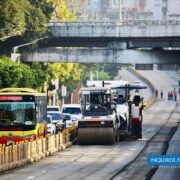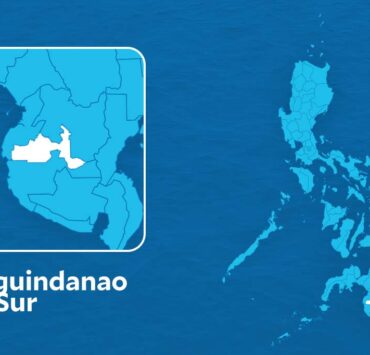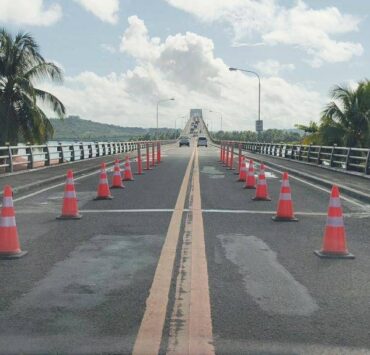Gov’t eyes second San Juanico bridge

The national government is considering building a second bridge that will span the San Juanico Strait between the islands of Samar and Leyte amid the structural problems found on the iconic San Juanico Bridge, Public Works Secretary Manuel Bonoan said on Wednesday.
In a press briefing, Bonoan said the planned bridge, expected to span 2.6 kilometers and longer than the current structure, is undergoing detailed engineering design and is projected to begin construction shortly after the plans are finalized in 2026.
“The San Juanico Bridge, opened in 1973, is over 50 years old. It has long been due for major rehabilitation,” Bonoan said.
“In fact, the Marcos administration [had] anticipated this and [had] planned a new bridge adjacent to the current one, which would be financed by the Japanese government,” he said.
Once the new span is operational, the existing bridge will be fully closed for rehabilitation, according to the Department of Public Works and Highways (DPWH) secretary.
The 2.6-km San Juanico Bridge is the longest bridge in the Philippines that crosses a body of seawater, and for over half a century, it has become an iconic landmark in Eastern Visayas with its S-shaped curve.
Inaugurated in 1973 during the presidency of Ferdinand Marcos Sr., the bridge was considered a centerpiece of his administration’s infrastructure push, reportedly built as a “gift of love” to first lady Imelda Marcos, a native of Leyte.
State of emergency
Bonoan disclosed the plan for a second bridge a day after the provincial government of Samar declared a state of emergency across the province in response to the vehicle restrictions of passing the San Juanico Bridge.
Residents have expressed concern over the imminent increase in the cost of goods in the region as transportation between the islands of Samar and Leyte will be made more difficult with the weight restrictions being imposed by the DPWH.
“Unfortunately, in the preliminary assessment of the San Juanico Bridge, the approach structures—not the main structure, the main structure is intact—[have] segments that were already in the state of deterioration underneath, so … it was recommended that [these] be closed immediately,” he said.
Bonoan said the DPWH had not considered plans to build a new temporary bridge spanning the strait, which, he said, would take years to complete.
The DPWH, he said, has limited traffic on San Juanico to vehicles under three tons after engineers found deterioration in its approach structures.
“We should not wait until it becomes unsafe. We must proactively rehabilitate our aging infrastructure,” he said.
He said the agency was undertaking emergency retrofitting, even as he hoped that they could raise the load limit to 10 tons by yearend to ease the impact on transport and logistics.
For heavier vehicles like buses, passengers would be shuttled for free across the bridge and transferred to another bus on the other side.
He said the DPWH was coordinating with the Philippine Ports Authority (PPA) to redirect cargo through alternative routes, including a roll on, roll off link to Carigara port in Leyte.
In Eastern Visayas, the Regional Development Council (RDC) has urged Congress to grant President Marcos emergency powers to utilize the national calamity fund for the immediate rehabilitation of San Juanico Bridge.
Tapping calamity funds
Lord Byron Torrecarion, Office of Civil Defense (OCD) regional director and member of the executive committee of the RDC, said a May 19 resolution cited the urgent need to restore the structural integrity of the iconic bridge.
He emphasized the bridge’s critical role in regional and national connectivity as he warned that continued vehicle restrictions are already having widespread negative effects across different sectors in Eastern Visayas.
“Emergency repair has to start soon to ease the burden. The weight limit is causing adverse impacts [on] many sectors in the region,” Torrecarion told local reporters. “At least P500 million could be sourced from the [national calamity] fund to jumpstart repairs.”
The DPWH earlier estimated that a full rehabilitation of the San Juanico Bridge would require around P900 million.
While the total restoration project would take time, Torrecarion stressed the need to start emergency works as soon as possible.
In the meantime, Torrecarion said the OCD was prepared to subsidize transportation costs for essential and perishable goods to help prevent further price hikes and supply shortages caused by the bridge’s limited accessibility.

















